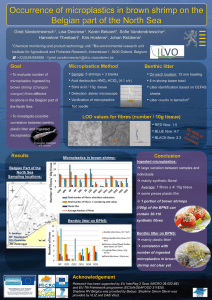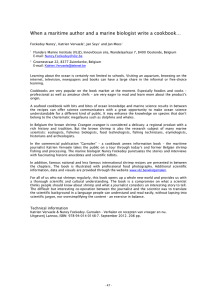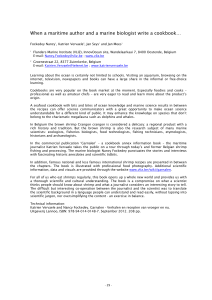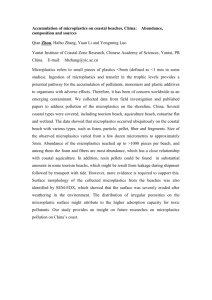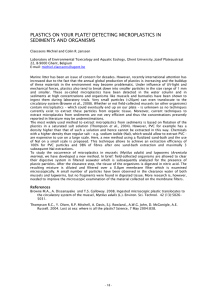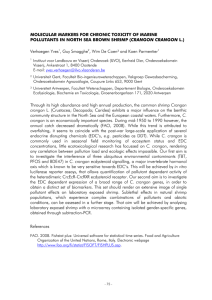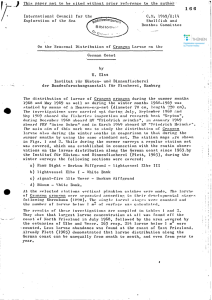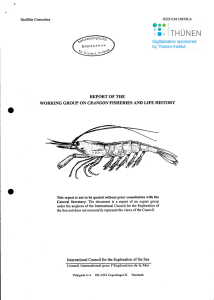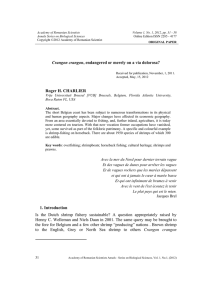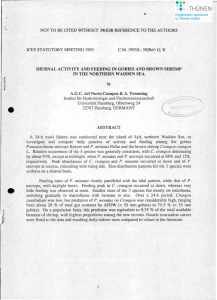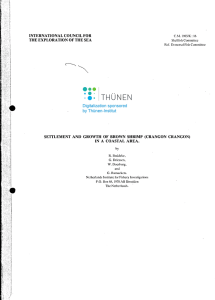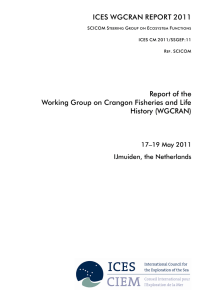Microplastics in the food chain? Occurrence of microplastics in brown shrimp
advertisement
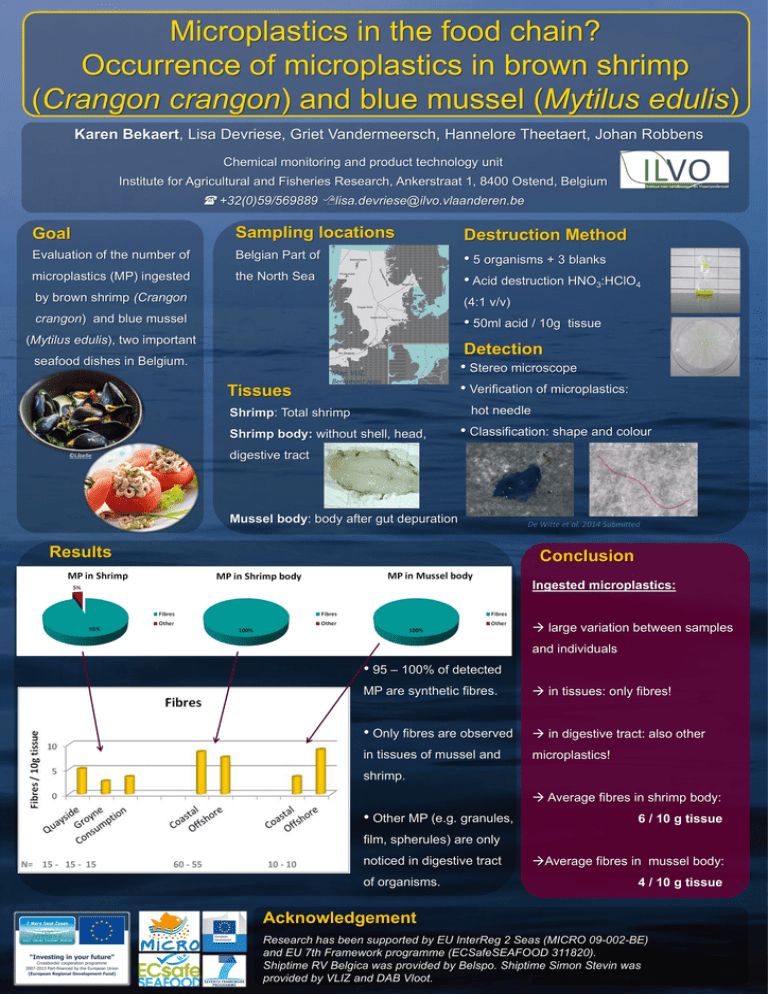
Microplastics in the food chain? Occurrence of microplastics in brown shrimp (Crangon crangon) and blue mussel (Mytilus edulis) Karen Bekaert, Lisa Devriese, Griet Vandermeersch, Hannelore Theetaert, Johan Robbens Chemical monitoring and product technology unit Institute for Agricultural and Fisheries Research, Ankerstraat 1, 8400 Ostend, Belgium +32(0)59/569889 lisa.devriese@ilvo.vlaanderen.be Goal Sampling locations Evaluation of the number of Belgian Part of microplastics (MP) ingested the North Sea Destruction Method • 5 organisms + 3 blanks • Acid destruction HNO3:HClO4 by brown shrimp (Crangon (4:1 v/v) crangon) and blue mussel • 50ml acid / 10g (Mytilus edulis), two important seafood dishes in Belgium. Tissues Map: VLIZ, Berlamont Jean tissue Detection • Stereo microscope • Verification of microplastics: hot needle Shrimp: Total shrimp Shrimp body: without shell, head, • Classification: shape and colour digestive tract ©Libelle Mussel body: body after gut depuration Results De Witte et al. 2014 Submitted Conclusion Ingested microplastics: large variation between samples and individuals • 95 – 100% of detected MP are synthetic fibres. in tissues: only fibres! • Only fibres are observed in digestive tract: also other in tissues of mussel and microplastics! shrimp. Average fibres in shrimp body: • Other MP (e.g. granules, 6 / 10 g tissue film, spherules) are only N= 15 - 15 - 15 60 - 55 10 - 10 noticed in digestive tract of organisms. Average fibres in mussel body: 4 / 10 g tissue Acknowledgement Research has been supported by EU InterReg 2 Seas (MICRO 09-002-BE) and EU 7th Framework programme (ECSafeSEAFOOD 311820). Shiptime RV Belgica was provided by Belspo. Shiptime Simon Stevin was provided by VLIZ and DAB Vloot.
